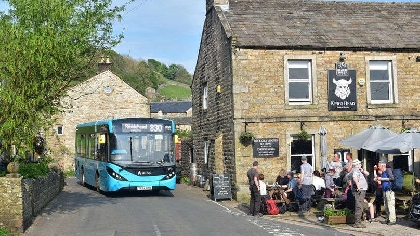
The Yorkshire Dales National Park will be home to the finest variety of wildlife in England by 2040. Thats the claim made at today’s full Authority meeting.
A group called the Yorkshire Dales Biodiversity Forum, which includes Natural England and Environment Agency staff, as well as people from charities such as the RSPB and National Trust, re-committed itself to the goal.
Members of the Authority heard that since the Biodiversity Forum launched its second nature recovery plan, in 2011, some important and nationally endangered species had thrived in the National Park, such as curlew, red squirrel and dormouse, owing largely to conservation work carried out by farmers and others.
Overall, however, the two very ambitious targets in ‘Nature in the Dales: 2020 Vision’ – to get 95% of the area of priority habitats in the National Park in “good” condition, and 95% of the populations of priority species in the National Park into a stable or increasing condition – had not been met.
Today’s meeting agreed that the Authority should help prepare a new ‘nature recovery plan’ for the Yorkshire Dales National Park. The Biodiversity Forum, working with another local group, the Farming and Land Management Forum, would help to produce the plan by the end of March next year.
The Chair of the Yorkshire Dales Biodiversity Forum, Peter Welsh, said: “A huge amount has been achieved for nature in the Dales in recent years. In the limestone dale sides of Wharfedale, for instance, where farmers have moved to light grazing with cattle, there has been a very impressive recovery of flowers such as rockrose and bird’s-eye primrose as well as of butterflies such as northern brown argus and dark green fritillary and birds such as skylark and barn owl – all benefiting from the more varied flora and structure of the vegetation.
“However, we are not immune from the wider changes causing the biodiversity and climate emergencies. Further effort and financial support is urgently needed. We think there are exciting opportunities to work with farmers and landowners on large scale nature recovery.”
Member Champion for the Natural Environment at the Yorkshire Dales National Park, Ian McPherson, said: “The ambition to make the Yorkshire Dales National Park home to the finest variety of wildlife in England by 2040 is a realistic one. More than a quarter of the land area of the National Park is designated as nationally or internationally important for wildlife, more than any other English National Park. Much has been achieved in the past ten years. The Yorkshire Dales has become a stronghold for some species that have sadly disappeared elsewhere, while peatlands and rivers are generally being restored to good ecological health rather than declining in condition.
“It appears that the nature recovery work in the National Park that has been gaining momentum for the past twenty years is accelerating. Big projects are being developed, or in some cases are beginning, such as the Tees-Swale: Naturally Connected programme. The great hope for wider nature recovery is the government’s proposed Environmental Land Management scheme. If we can align the right resources with the opportunities, we know that farming in the National Park can support an abundance of plant and animal life.”


 Council chiefs agree record £2.5m investment in car parks
Council chiefs agree record £2.5m investment in car parks
 Summer bus services in the Dales extended
Summer bus services in the Dales extended
 Dales pub landlady loses enforcement notice appeal
Dales pub landlady loses enforcement notice appeal
 Ex-National Park head and son pay tribute to Pennine Way in song
Ex-National Park head and son pay tribute to Pennine Way in song
 A PRESSING engagement at Gallery on the Green
A PRESSING engagement at Gallery on the Green
 Dales pavilion featured in TV advert becomes thriving hub
Dales pavilion featured in TV advert becomes thriving hub
 Planners refuse Richmond housing development
Planners refuse Richmond housing development
 Wider ban on heather burning ‘risks catastrophic wildfires’
Wider ban on heather burning ‘risks catastrophic wildfires’
Comments
Add a comment